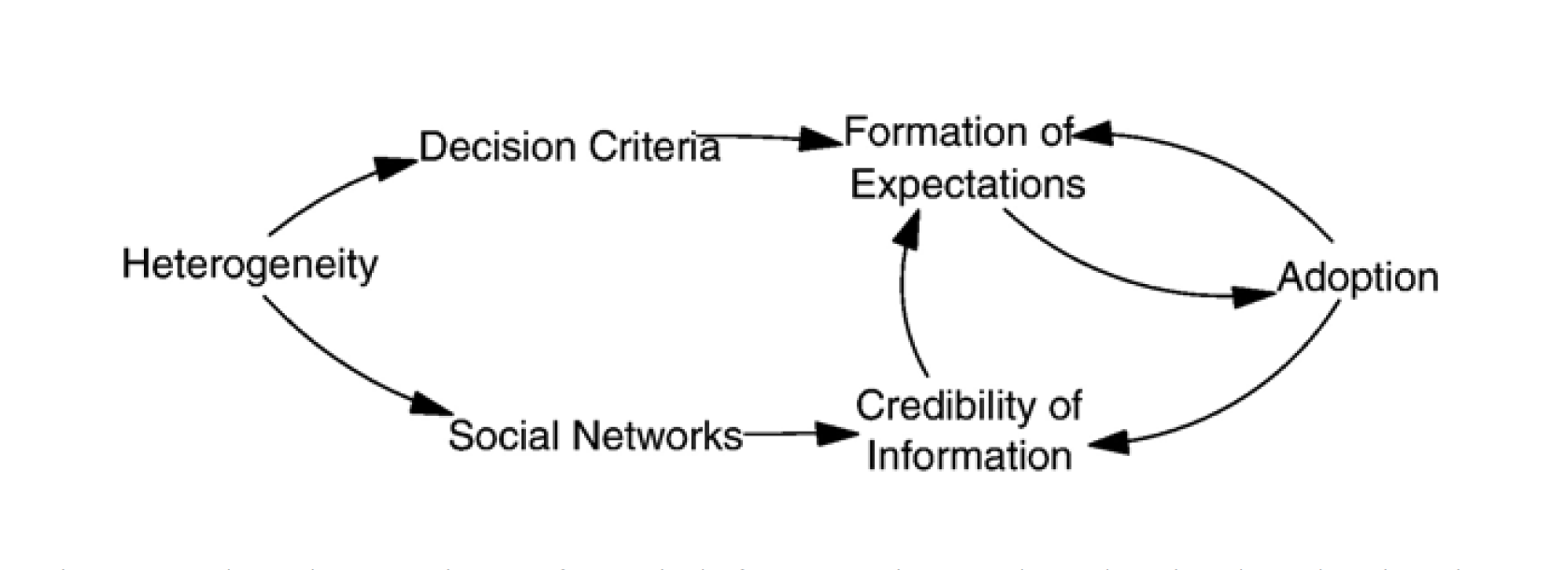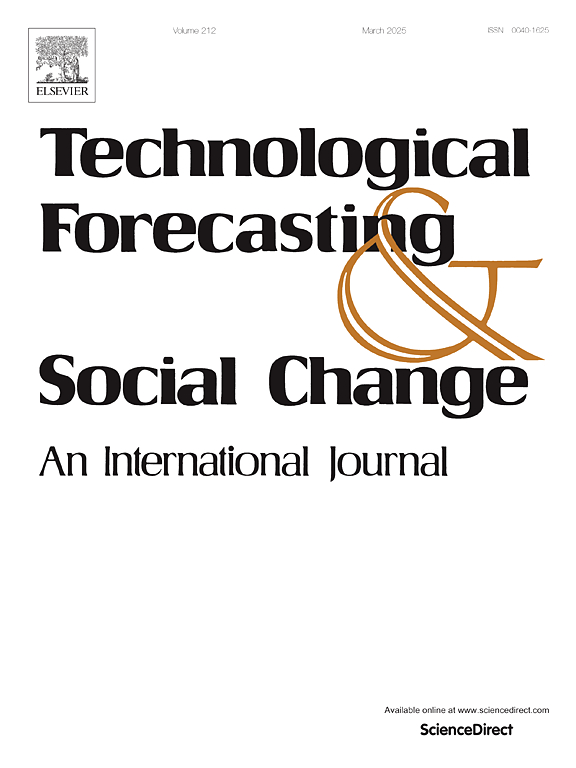Research published in 2007
Demand heterogeneity and the formation of expectations
This works explores how cognitive processes at the individual level using concepts from cognitive psychology and decision making under uncertainty influence interpersonal communications at the aggregate social level. My coauthor and I show that population heterogeneity generates different decision criteria and a social topology which greatly affect perceptions and the formation of expectations.

Abstract
Diffusion models of technological innovations are often based on an epidemic structure which has a good fit to historical data but whose communication assumptions lack explanatory power. They assume a simplified decision process, uniform decision criteria across adopters categories, and a fully interconnected social structure. The objective of this paper is to show that the dynamics of social factors during technological substitutions have significant effects on substitution patterns. The success of a paradigmatic shift is not only a function of technological characteristics but also depends on change agents and many social dynamics. Such complexity requires analysis at several levels of granularity. We start with cognitive processes at the individual level using concepts from cognitive psychology and decision making under uncertainty and then move to interpersonal communications at the aggregate social level. We show that population heterogeneity generates different decision criteria and a social topology which greatly affect perceptions and the formation of expectations. The structure of interpersonal networks also explains how the relevance and credibility of information impact the critical mass dynamics of technology adoption. A more complete model accounting for social interactions provides a useful framework for understanding complex substitution patterns and reducing the risk of misreading the market.
This research project was conducted in collaboration with:
Henry Birdseye Weil (MIT Sloan School of Management)
Courtesy of @ Stephan Zirwes
” The effective targeting of opinion leaders, and clear understanding of the
structure of interpersonal networks, can ensure that the information they will generate will be relevant and credible to others.”
Moving from cognitive processes at the individual level to interpersonal communications at the social aggregation level provides a framework to understand the complexity of social dynamics in technological substitution. Heterogeneous individuals value different functionalities and mobilize different evaluation criteria to form their expectations of utility.

Understanding the dynamics induced by the structure of interpersonal networks can reduce the risk of misreading the market.
Back to Technology Disruption

